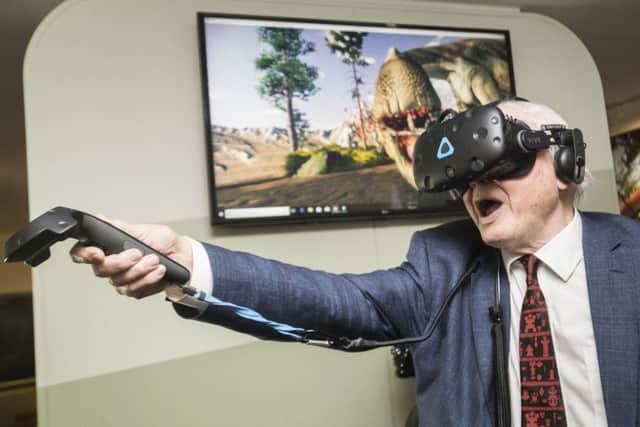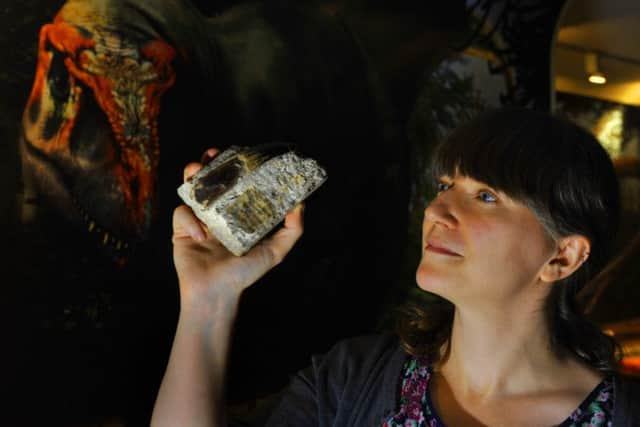Sir David Attenborough opens Jurassic World exhibition in York
A master at his craft, he is even at 91 setting a worldwide agenda on climate change and inspiring entire generations to change aspects of their everyday life.
And while a world of new technology in the hands of today’s youth can bring ancient discoveries to life in a way that has never been seen before, he says there is more to it. Opening York’s new Jurassic World exhibition yesterday, he said what the city now has to offer is now something far greater – for not only does it recreate something spectacular but it also houses the real thing.
Advertisement
Hide AdAdvertisement
Hide Ad“It’s thrilling to see this interactive 3D,” he said, having trialled new technologies reimagining great sea-beasts, discovered near Whitby in the 1850s. “It’s a marvellous piece of technology. But what is really important is that this museum has not only got that interactive vision, but it also has the real thing.”


Jurassic World, at the Yorkshire Museum, is to open to the public today, taking visitors on a journey back through 150 million years in the region “to discover lost giants and the changing worlds they inhabited”.
Three years in the making, the exhibition aims to open up a world of dramatic lost landscapes.
Great sea dragons, measuring 8m long, are reimagined through augmented reality. Virtual dinosaurs and real footprints join internationally significant collections.
Advertisement
Hide AdAdvertisement
Hide AdWith items uncovered through decades of exploration across the region, the exhibition aims to show what life was like in Yorkshire throughout the Jurassic period.


“It’s based on the resources beneath our feet today,” said curator Andrew Woods. “We are told the Jurassic coast is in the South, but we like to say it’s right here.”
Dr Sarah King, curator of Natural Sciences, describes it as an “immersive space” which the museum hopes will inspire people to explore.
Among the displays is a virtual reality experience, including one giving visitors the chance to offer a sauropod lunch.
Advertisement
Hide AdAdvertisement
Hide AdSir David, perhaps the world’s greatest naturalist, tried out the state-of-the-art virtual reality headsets, clearly enjoying the experience as he joked with the staff.


The veteran broadcaster said he grew up loving fossils and still found them exciting.
“Going up to a rock and hitting it with a hammer and it falls open and you see the most beautiful, perfect shell that nobody’s seen for 150m years – if that isn’t romantic, I don’t know what is.
“Certainly, as a boy I was absolutely fixated with fossils. I collected them and I suppose I learned the rudiments of biology out of viewing fossils.”
Advertisement
Hide AdAdvertisement
Hide AdThe exhibition, which is split into four sections, will include dig zones where people can hunt for fossils, corals seas, deep oceans, and dinosaur country.


Such an museum and exhibition, said Sir David, can only “illuminate” the area.
“It’s an excellent museum with splendid displays, and marvellous objects,” he said.
The huge sea reptiles were as impressive as any he’d seen, he added, joking that to have five of them “seemed a bit greedy”.
Advertisement
Hide AdAdvertisement
Hide Ad“Museums are here to enrich life,” he added. “Part of the joy of life is appreciating the world in which we live, It’s full of wonder. Kids don’t need encouragement with dinosaurs, they have got zest and enthusiasm, and this is the fodder for children’s engagement.”